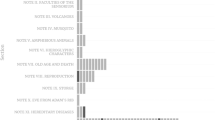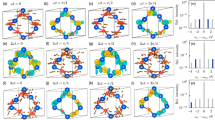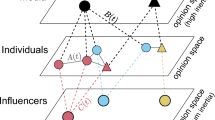These scientists prioritized their replies to letters in the same way that people rate their e-mails today.
Abstract
In an era when letters were the main means of exchanging scientific ideas and results, Charles Darwin (1809–82) and Albert Einstein (1879–1955) were notably prolific correspondents. But did their patterns of communication differ from those associated with the instant-access e-mail of modern times? Here we show that, although the means have changed, the communication dynamics have not: Darwin's and Einstein's patterns of correspondence and today's electronic exchanges follow the same scaling laws. However, the response times of their surface-mail communication is described by a different scaling exponent from e-mail communication, providing evidence for a new class of phenomena in human dynamics.
This is a preview of subscription content, access via your institution
Access options
Subscribe to this journal
Receive 51 print issues and online access
$199.00 per year
only $3.90 per issue
Buy this article
- Purchase on SpringerLink
- Instant access to full article PDF
Prices may be subject to local taxes which are calculated during checkout

Similar content being viewed by others
References
The Correspondence of Charles Darwin Vols 1–14 (Cambridge Univ. Press, Cambridge, 1984–2004).
The Collected Papers of Albert Einstein Vols 1,5,8,9 (Princeton Univ. Press, New Jersey, 1993–2004).
Cobham, A. J. Op. Res. Soc. Am. 2, 70–76 (1954).
Abate, J. & Whitt, W. Queue. Syst. 25, 173–233 (1997).
Barabási, A. -L. Nature 435, 207–211 (2005).
Kaluza, T. Sber. Preuss. Akad. Wiss. 54, 966–972 (1921).
Bunde, A., Eichner, J. F., Havlin, S. & Kantelhardt, J. W. Physica A 342, 308–314 (2004).
Author information
Authors and Affiliations
Corresponding author
Ethics declarations
Competing interests
The authors declare no competing financial interests.
Supplementary information
Supplementary Information
(DOC 107 kb)
Rights and permissions
About this article
Cite this article
Oliveira, J., Barabási, AL. Darwin and Einstein correspondence patterns. Nature 437, 1251 (2005). https://doi.org/10.1038/4371251a
Published:
Issue date:
DOI: https://doi.org/10.1038/4371251a
This article is cited by
-
Bursts of communication increase opinion diversity in the temporal Deffuant model
Scientific Reports (2024)
-
Phase transitions of civil unrest across countries and time
npj Complexity (2024)
-
Human emergency behaviour and psychological stress characteristic mining based on large-scale emergencies
Computational and Mathematical Organization Theory (2024)
-
Common multi-day rhythms in smartphone behavior
npj Digital Medicine (2023)
-
Communication now and then: analyzing the Republic of Letters as a communication network
Applied Network Science (2022)



